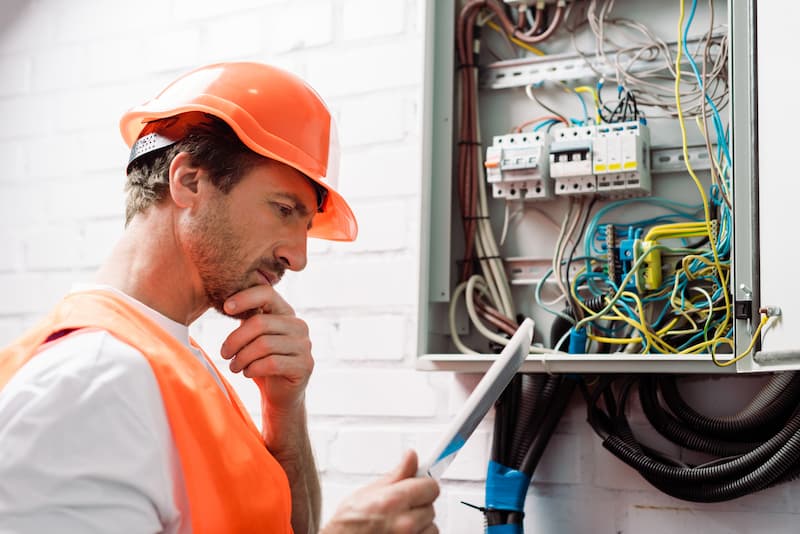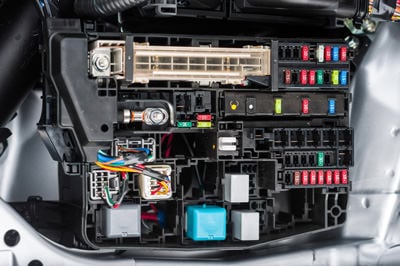Streamline processes with specialized mechanical system optimisation support.
Wiki Article
Top Tips for Effective Electrical System Troubleshooting
Troubleshooting electrical systems needs a methodical method, grounded in a comprehensive understanding of electric principles and safety methods. By acquainting oneself with circuit parts, utilizing important tools, and sticking to an organized assessment approach, specialists can efficiently determine and fix concerns. Nevertheless, the nuances of reliable repairing expand beyond simple technological understanding; understanding exactly how to record searchings for and focus on safety can dramatically influence results. As we explore these critical elements further, it comes to be clear that understanding this process is not simply useful yet necessary for success in the field.Understand the Essentials
Comprehending the basics of electrical systems is essential for efficient troubleshooting, as a strong foundation permits technicians to detect and resolve concerns extra successfully. A detailed grasp of electric principles, such as voltage, present, resistance, and power, is crucial in determining the origin of troubles. Voltage is the electrical possible difference that drives present through a circuit, while resistance opposes the circulation of present, affecting the total capability of the system.Familiarity with circuit parts, consisting of resistors, capacitors, diodes, and changes, is additionally vital. Each part plays a distinctive duty in circuit habits and can influence performance when malfunctioning. Additionally, understanding series and parallel circuit arrangements is essential, as these setups influence the circulation of voltage and present within the system.
Technicians must be conscious of potential threats, such as shock and brief circuits, to apply risk-free troubleshooting techniques. By grasping these fundamental principles, technicians enhance their ability to carry out efficient diagnostics and repairs, eventually leading to improved efficiency and reliability of electric systems (electrical system troubleshooting).
Gather Necessary Tools
Effective troubleshooting of electrical systems needs the best collection of devices to identify and solve problems properly. A well-equipped professional can significantly enhance efficiency and performance in recognizing problems. Vital devices include a multimeter, which determines voltage, current, and resistance, enabling specific assessments of electrical elements. Clamp meters are also useful for gauging current without separating the circuit, guaranteeing security and ease.In addition, insulated hand devices such as screwdrivers, pliers, and cord strippers are essential for securely controling electrical connections. It is also a good idea to have a circuit tester on hand to confirm the visibility of voltage in outlets and cords. For more complex systems, a thermal imaging cam can assist discover overheating elements, indicating prospective failures.

Comply With a Methodical Approach
Having gathered the proper devices, the following action in repairing electric systems is to comply with a systematic method. A systematic method guarantees that technicians can determine faults effectively and accurately, reducing downtime and protecting against unneeded repair work.Begin by reviewing the system's schematic layouts and requirements. Understanding the layout and operational criteria will certainly provide context for identifying problems. Next, isolate the problem location by utilizing a procedure of elimination. This includes monitoring each element methodically, starting from the power resource and functioning in the direction of the load.
Make use of screening equipment, such as multimeters and oscilloscopes, to collect unbiased data concerning voltage, current, and resistance at different points within the system. This empirical proof will certainly lead your troubleshooting initiatives and aid to confirm or get rid of prospective sources of failing.
Additionally, consider environmental aspects that might affect the system's efficiency, such as temperature changes or wetness ingress. An extensive inspection of circuitry, connections, and parts will certainly guarantee that all opportunities are made up.
Document Your Searchings For
Extensive documentation is vital in the troubleshooting process of electrical systems. This practice not just aids in comprehending the root reason of the trouble however also serves as a referral for future troubleshooting initiatives.
In addition, keeping a log of parts replaced or repairs performed is indispensable. This info sustains supply monitoring and can aid examine the durability and dependability of particular parts.
Eventually, the documentation process should be extensive yet concise, allowing very easy retrieval and evaluation - electrical system troubleshooting. By prioritizing in-depth documentation, service technicians can create a useful knowledge base that not just aids in existing troubleshooting however likewise equips future maintenance efforts, thereby improving total system integrity

Prioritize Safety Actions
Recognizing the inherent dangers connected with electric systems is vital for making certain safety during troubleshooting. Electrical shock, burns, and equipment damages are just a few of the possible dangers that service technicians deal with. Prioritizing precaution is not only a legal commitment however also a moral crucial that safeguards both the technician and the surrounding setting.Before starting any troubleshooting task, technicians need to wear proper individual safety devices (PPE), consisting of insulated handwear covers, security glasses, and flame-resistant garments. Ensuring that the work area is completely dry and without clutter can considerably decrease the risk of crashes. Additionally, it is necessary to de-energize circuits prior to beginning any job, confirming that they are not live through using a multimeter or voltage tester.
Developing clear interaction methods with team participants is additionally important; this makes certain that everybody is aware of possible dangers and the standing of the electric system being dealt with. Lastly, having an emergency action strategy in area can verify very useful in case of an incident. By focusing on safety measures, specialists can properly reduce dangers and cultivate a much safer work environment.
Verdict
Effective electrical system repairing relies upon a thorough understanding of basic concepts and a systematic strategy. By gathering essential tools, sticking to systematic examination methods, and thoroughly recording findings, the fixing procedure comes to be much more effective and trustworthy. Prioritizing safety measures makes certain the health of people involved and the honesty of the electrical system. Implementing these approaches will certainly boost the troubleshooting experience, bring about quicker resolutions and boosted functional efficiency in electrical systems.Report this wiki page